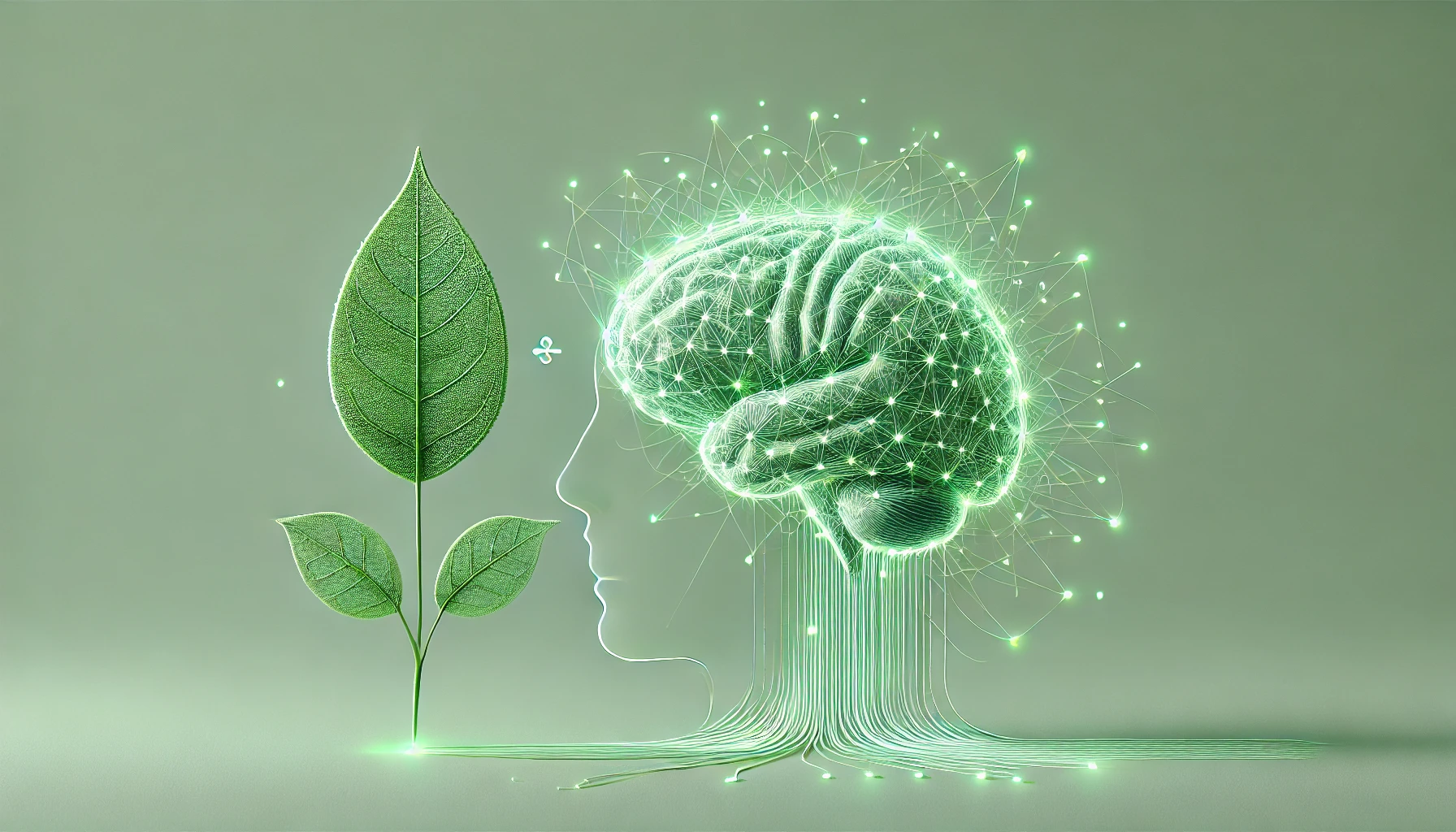contact@cayeit.com
by: Abhimanyu Kumar MSc,MD(Ay),PhD & Aviral Apurva MS, MBA
At first glance, the connection between Ayurveda and BCIs might seem tenuous, even far-fetched. However, as we explore deeper into the principles of both disciplines, a fascinating synergy emerges.
Ayurveda, which translates to ‘science of life’ in Sanskrit, is based on the concept of balance between mind, body, and spirit. It emphasizes the interconnectedness of all living things and the universe. On the other hand, brain-computer interfaces represent the cutting edge of neurotechnology, allowing direct communication between the brain and external devices. The marriage of these seemingly disparate fields is opening up new frontiers in our understanding of the human mind and its potential for integration with technology.
The core principle of Ayurveda-the mind-body connection, aligns surprisingly well with the fundamental goal of BCIs: to create a seamless link between human cognition and external systems. Ayurvedic practices, such as meditation and pranayama (breath control), have long been known to alter brain states and enhance mental clarity. These techniques are now being studied in the context of BCI development, with researchers exploring how Ayurvedic methods can improve signal quality, user adaptation, and overall efficacy of brain-computer interfaces.
Moreover, Ayurveda’s holistic approach to health and wellness may inspire BCI researchers to consider the broader implications of their work. Instead of focusing solely on the technological aspects, they may examine how these interfaces can be designed to promote overall well-being, mental health, and cognitive enhancement – concepts that have been central to Ayurvedic practice for millennia.
As we continue to explore this unlikely alliance, we’ll uncover how ancient Ayurvedic wisdom is not only complementing but also may actively shape the future of brain-computer interfaces, potentially revolutionizing fields such as medicine, communication, and human-computer interaction.
Decoding the Mind-Body Connection: Ayurvedic Principles in BCI Design
The mind-body connection, a cornerstone of Ayurvedic philosophy, may prove to be a game-changer in the realm of brain-computer interface design. Ayurveda posits that the mind and body are inextricably linked, with each influencing the other in a continuous feedback loop. This ancient understanding needs validation and may be applied in cutting-edge BCI research, leading to more intuitive and effective interfaces.
One of the key Ayurvedic concepts which may be incorporated into BCI design is the idea of ‘prakriti’ or individual constitution. According to Ayurveda, each person has an unique psychophysiological makeup, determined by the balance of three fundamental energies or doshas: Vata (akasha and vayu), Pitta (agni and jala), and Kapha (jala and prithvi). BCI researchers may explore how these individual differences might affect brain signal patterns and user interaction with the interface.
Table.1: Illustrating how Ayurvedic doshas might influence BCI design.
| Dosha | Characteristics | Potential BCI Design Considerations |
|---|---|---|
| Vata | Quick, changeable, creative | Adaptive interfaces, rapid response times, creative applications |
| Pitta | Focused, goal-oriented, intense | Precision-focused interfaces, performance optimization features |
| Kapha | Stable, calm, methodical | Steady, consistent interfaces, long-term usage optimization |
By taking into account these individual variations, researchers may develop more personalized and adaptable BCIs. For instance, a Vata-dominant individual might benefit from a BCI that can quickly adjust to their rapidly changing thought patterns, while a Kapha-dominant person might prefer a more stable and consistent interface.
Another Ayurvedic principle which may be applied to BCI design is the concept of ‘sattva,’ or mental clarity and balance. Ayurvedic practices like meditation and yoga are known to enhance sattva, leading to improved mental focus and reduced mental chatter. BCI researchers may incorporat these practices into user training protocols, helping individuals achieve the mental states most conducive to effective BCI operation.
Furthermore, the Ayurvedic concept of ‘prana’ or life force, often associated with breath, is being explored in the context of BCI control. Researchers may investigate whether incorporating breath control techniques (pranayama) into BCI protocols can enhance user performance. Based on Ayurveda concepts, synchronized breathing patterns may indeed improve the stability and clarity of brain signals, potentially leading to more accurate and reliable BCI control.
As we unravel the complexities of the mind-body connection through the view of both Ayurveda and modern neuroscience, we may uncover new ways to design BCIs that are not just technologically advanced, but also aligned with the natural rhythms and tendencies of the human mind and body. This holistic approach promises to yield interfaces that are more intuitive, effective, and harmonious with our innate cognitive processes.
Ayurvedic Herbs and Neurotransmitters: Boosting BCI Performance
One of the most intriguing intersections between Ayurveda and brain-computer interfaces lies in the realm of herbal medicine. Ayurveda has long utilized a vast pharmacopeia of herbs and plant-based remedies to enhance cognitive function, improve mental clarity, and balance neurotransmitters. Now, researchers may explore how these natural compounds might be used to optimize brain states for BCI use, potentially enhancing signal quality and user performance.
Several Ayurvedic herbs have caught the attention of neuroscientists and BCI researchers may utilise this knowledge reported which indicates cognitive-enhancing and neuroprotective properties of Ayurveda herbs like- Bacopa Monnieri (Brahmi), Withania Somnifera (Ashwagandha), Curcuma Longa (Turmeric), Centella Asiatica (Gotu Kola), Convolvulus Pluricaulis (Shankhpushpi) . Let’s examine some of these herbs and their potential applications in BCI technology:
Table.2: Summarizing the potential benefits of these Ayurvedic herbs for BCI applications.
| Herb | Traditional Ayurvedic Use | Potential BCI Application |
|---|---|---|
| Bacopa Monnieri | Memory enhancement | Improved signal clarity, enhanced learning of BCI control |
| Withania Somnifera | Stress reduction | Stable brain signals in high-stress situations |
| Curcuma Longa | Anti-inflammatory | Long-term neuroprotection for BCI users |
| Centella Asiatica | Mental clarity and focus | Improved sustained attention during BCI use |
| Convolvulus Pluricaulis | Cognitive enhancement | Better signal-to-noise ratios in BCI recordings |
One particularly exciting area of research is the potential for Ayurvedic herbs to modulate neurotransmitter levels in ways that are beneficial for BCI use. For example, some studies suggest that Bacopa Monnieri may increase levels of serotonin and dopamine, neurotransmitters associated with mood and motivation. This could potentially lead to improved user engagement and satisfaction with BCI technology, especially in therapeutic applications.
Moreover, the adaptogenic properties of herbs like Ashwagandha may help users maintain optimal brain states during extended BCI use. By mitigating the effects of stress and fatigue, these herbs could potentially extend the effective usage time of BCIs, a crucial factor in many medical and assistive technology applications.
Researchers may also explore how Ayurvedic herbal preparations might be combined with modern drug delivery systems to create targeted neurochemical interventions that enhance BCI performance. For instance, nanoparticle-based delivery of curcumin from turmeric may be investigated as a way to provide localized neuroprotection in areas where BCI electrodes interface with brain tissue.
As we continue to unravel the complex interactions between Ayurvedic herbs and brain function, we may discover new ways to optimize the human side of the brain-computer interface. This fusion of ancient herbal wisdom and cutting-edge neurotechnology could lead to BCIs that are not only more effective but also more harmonious with our natural biology.
Meditation and Neuroplasticity: Enhancing BCI Adaptability
The Ayurvedic practice of meditation, particularly mindfulness meditation, may be used as a powerful tool in enhancing the adaptability and effectiveness of brain-computer interfaces. This ancient technique, which has been a cornerstone of Ayurvedic mental health practices for thousands of years, may reshape the brain’s structure and function – a phenomenon known as neuroplasticity.
Neuroplasticity refers to the brain’s ability to reorganize itself by forming new neural connections throughout life. This property is crucial for learning and adapting to new experiences, including the use of brain-computer interfaces. Recent neuroscientific research may show a path to the researchers that regular meditation practice can significantly enhance neuroplasticity, potentially making the brain more adaptive and responsive to BCI technology.
Here are some possible key ways in which meditation-induced neuroplasticity is being leveraged to enhance BCI adaptability:
- Improved Signal Quality: Regular meditation practice can lead to increased Gray matter density in areas of the brain associated with attention and sensory processing. This structural change may result in clearer and more stable brain signals, which are crucial for accurate BCI control.
- Enhanced Cognitive Flexibility: Meditation has been found to improve cognitive flexibility – the ability to switch between different mental tasks. This enhanced flexibility could be particularly beneficial in BCIs that require users to quickly shift between different mental commands or states.
- Reduced Mental Noise: One of the challenges in BCI use is distinguishing intentional commands from background mental activity. Meditation’s ability to reduce mental chatter and increase focused attention could lead to more precise and reliable BCI control.
- Accelerated Learning: The neuroplastic changes induced by meditation may accelerate the learning process for BCI use. Users who practice meditation might be able to adapt to new BCI systems more quickly and effectively.
- Emotional Regulation: Meditation is known to enhance emotional regulation, which could be beneficial in maintaining consistent BCI performance, especially in high-stress or emotionally charged situations.
The potential impact of meditation on BCI performance Metrix- Signal-to-Noise Ratio, Command Accuracy, Learning Time (hours), Sustained Usage (min) may be considered to develop meditation-based training protocols specifically designed for BCI users. These protocols aim to cultivate the mental states and neural patterns most conducive to effective BCI operation. For example, a typical training session might include:
- A brief body scan to promote physical relaxation
- Focused attention meditation to enhance concentration
- Open monitoring meditation to improve cognitive flexibility
- Loving-kindness meditation to regulate emotions and reduce frustration
By incorporating these Ayurvedic-inspired meditation techniques into BCI training, researchers hope to create more intuitive and adaptable interfaces that can be mastered more quickly and used more effectively.
The long-term practice of meditation may have cumulative benefits for BCI users. Some scientists speculate that regular meditators might be able to achieve levels of BCI control that were previously thought impossible, such as simultaneous control of multiple devices or highly nuanced command inputs.
The integration of meditation into BCI technology also opens up new possibilities for therapeutic applications. For instance, BCIs designed for patients with neurological disorders could incorporate meditation-based protocols to enhance neuroplasticity, potentially accelerating recovery and improving outcomes.
The synergies between Ayurvedic meditation practices and BCI technology, may uncover new ways to harness the power of the mind-body connection. This fusion of ancient wisdom and modern neurotechnology could lead to BCIs that are not just tools we use, but extensions of our natural cognitive abilities, seamlessly integrated with our minds and bodies.
Ayurvedic Principles for Optimizing the Human Side of BCIs
While much of the focus in brain-computer interface research has been on the technological aspects, the incorporation of Ayurvedic principles may bring attention to the human side of the equation. Ayurveda’s holistic approach to health and well-being offers valuable insights into optimizing the physical, mental, and emotional state of BCI users, potentially leading to improved performance and user experience.
i. Prakriti-based Personalization: Ayurveda’s concept of individual constitution (prakriti) may inspire researchers for a more personalized approach to BCI design and usage protocols. Researchers may develop algorithms that can adjust BCI parameters based on the user’s prakriti, potentially leading to more intuitive and effective interfaces.
ii. Sleep Hygiene: Ayurveda emphasizes the importance of quality sleep for overall health and cognitive function. BCI researchers may study how sleep patterns affect BCI performance and are developing guidelines for optimal sleep hygiene among BCI users.
This approach is particularly relevant for long-term or therapeutic BCI applications. For instance, in the case of BCIs used for communication by individuals with severe motor disabilities, the integration of Ayurvedic principles could lead to improved quality of life beyond just the functional aspects of the technology.
Moreover, the Ayurvedic emphasis on individualized approaches aligns well with the trend towards personalized medicine and technology. As BCIs become more sophisticated, the ability to tailor the entire user experience – from the interface itself to the user’s lifestyle – based on individual needs and characteristics could lead to unprecedented levels of efficacy and user satisfaction.
The Future of Ayurveda in BCI Research-emerging Trends and Possibilities
As we stand at the intersection of ancient wisdom and futuristic technology, the potential for Ayurveda to shape the future of brain-computer interfaces (BCI) is both exciting and vast. The integration of Ayurvedic principles into BCI research is not just a passing trend but a burgeoning field that promises to revolutionize human-computer interaction. Let’s delve into the emerging trends and possibilities in this fascinating area of study.
i. Biomarker-based BCI Optimization; In the future, researchers may translate Ayurvedic concepts of bodily balance into measurable biomarkers for optimizing BCIs. The Ayurvedic understanding of the three doshas could correlate with specific patterns of brain activity, hormone levels, or gut microbiome composition. These biomarkers could then be used to fine-tune BCI parameters in real-time, enhancing both accuracy and user comfort.
ii. Ayurvedic Neurofeedback: Combining Ayurvedic principles with neurofeedback techniques could lead to new therapeutic applications for BCIs. Future systems may use BCI technology to guide users towards mental states associated with specific dosha balances, resulting in improved stress reduction and emotional regulation.
iii. Consciousness Exploration: Ayurveda’s profound insights into consciousness and its relationship to the physical body could inspire new directions in BCI research. Scientists might explore the possibility of using BCIs to study and induce altered states of consciousness described in Ayurvedic texts, potentially facilitating deep meditative states traditionally associated with years of practice.
iv. Chronobiology-informed BCIs: Ayurveda’s emphasis on aligning with natural rhythms could influence the development of BCIs that adapt to users’ circadian and ultradian rhythms. These “chrono-BCIs” might optimize performance by aligning complex tasks with periods of peak cognitive function, enhancing overall efficiency and effectiveness.
v. Ayurgenomics in BCI: The emerging field of Ayurgenomics, which studies the relationship between Ayurvedic principles and genetics, could open new avenues for personalized BCI design. Researchers might investigate how genetic variations associated with different prakritis influence BCI performance and user experience, leading to more tailored and effective interfaces.
vi. Holographic Ayurvedic Interfaces: As augmented and virtual reality technologies advance, future researchers might explore creating holographic interfaces based on Ayurvedic visualizations. These interfaces could provide immersive environments for BCI control, potentially enhancing user engagement and performance through visually rich and intuitive designs.
vii. Quantum BCIs: Some theoretical physicists may explore potential connections between Ayurvedic concepts of consciousness and quantum mechanics. Although highly speculative, this research could lead to entirely new paradigms for BCI technology based on quantum principles, offering groundbreaking possibilities for the future.
The integration of Ayurveda and BCI research holds immense potential, promising innovative approaches to enhancing human-computer interactions. As this field evolves, we may witness groundbreaking advancements that blend ancient wisdom with cutting-edge technology, transforming the future of BCIs.
To sum up:
The integration of Ayurvedic principles into BCI research is not without challenges. Rigorous scientific validation of Ayurvedic concepts, standardization of practices, and bridging the gap between traditional knowledge and modern scientific methods are all ongoing processes. However, the potential benefits – more intuitive, personalized, and holistic BCIs – make this a worthwhile endeavour.
1. This fusion of Ayurveda and neurotechnology could have far-reaching implications beyond just improving BCI performance. It could lead to new understandings of consciousness, cognition, and the mind-body connection. It might even challenge and expand our current scientific paradigms, leading to breakthroughs not just in neurotechnology, but in our fundamental understanding of human nature.
2. This fascinating intersection of ancient wisdom and futuristic technology, may be witnessing the birth of a new field – one that could be called ‘Ayurvedic Neurotechnology’ or ‘Vedic Brain-Computer Interfacing.’ This field may holds the promise of creating technologies that are not just extensions of our bodies, but harmonious augmentations of our whole being – mind, body, and consciousness.
3. The future of Ayurveda in BCI research is bright and full of potential. As we will move forward, it will be crucial to approach this integration with both scientific rigor and respect for the profound wisdom contained in Ayurvedic traditions. By doing so, we may unlock new dimensions of human-computer interaction, leading to technologies that are not just more advanced, but more aligned with our true nature and potential as human beings.





